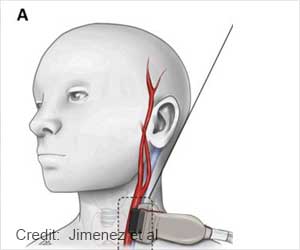Researchers at Robarts Research Institute have developed a simplified step-care protocol for treating high blood pressure.
Researchers at Robarts Research Institute have developed a simplified step-care protocol for treating high blood pressure. The new method is more effective than guidelines-based practice in helping people reduce their blood pressure.
Led by clinical pharmacologist Dr. Ross Feldman, the study showed that more patients lowered their BP - and to a greater extent - when their family doctors used the simplified treatment rather than having to choose from the large number of drugs available to treat high blood pressure.The study was presented at the American Heart Association conference in Orlando on Sunday, November 4. The Simplified Treatment Intervention to Control Hypertension (STITCH) trial was a study of 2,104 patients with high blood pressure (hypertension) at 45 family practices in southwestern Ontario, Canada. In order to increase the number of people with hypertension who reduce their blood pressure to “goal” levels, researchers wanted to see if there was a simpler way to direct treatment for hypertension than by following national guidelines for optimal management of blood pressure.
“The complexity of existing guidelines for the management of hypertension could be a barrier to effective therapy,” said Ross D Feldman, M.D., R.W. Gunton Professor of Therapeutics, University of Western Ontario, London, Canada. “To examine this question, we conducted a cluster randomization trial. Family practices were randomly assigned to implement a simplified step-care algorithm (STITCH-care) or Guidelines-based care for the management of hypertension,” Feldman added.
The STITCH algorithm consisted of 4 steps: 1) initiate therapy with ACE-inhibitor/diuretic or Angiotensin receptor blocker/diuretic combination 2) up-titrate combination therapy to the highest does 3) add a calcium channel blocker and up-titrate 4) add one of the non-first line antihypertensive agents. In the Guidelines-care arm physicians were educated on the use of existing national guidelines of the Canadian Hypertension Education Program, which list 12 options for initial therapy depending on the type of hypertension and co-existing medical conditions (very similar to the range of options outlined in the US JNC guidelines).
It was found that the proportion of patients who reduced blood pressure to the target level was higher in the STITCH-care group (65 percent) compared with the Guidelines-care group (53 percent). Average systolic blood-pressure (the top number in a blood pressure measurement) was reduced by 23 mmHg in the STITCH-care arm, compared to a lesser reduction of 18 mmHg in the Guidelines-care arm. In addition, diastolic blood pressure (the bottom number) was reduced by 10 mmHg in the STITCH-care patients vs. 8 mmHg in the Guidelines-care group.
“Assignment to the STITCH-care arm increased the chance of reaching the optimal blood pressure target by over 20 percent,” Feldman said. “We believe that use of a simplified algorithm for the treatment of hypertension is implementable, accepted by family physicians and results in improved blood pressure control rates. This return to ‘step-care’ may be an important way forward for the treatment of hypertension and may be a paradigm for the management of a range of chronic diseases,” Feldman added.
Advertisement
LIN/M











